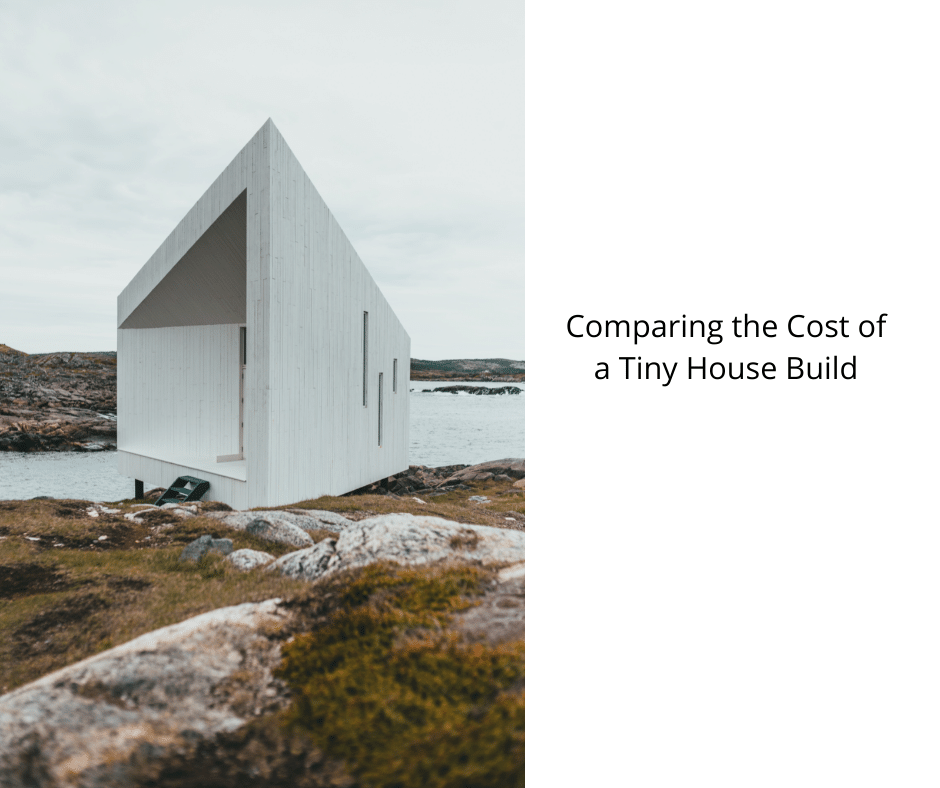The trend of using shipping containers as building materials is on the rise, as many builders are choosing to combine multiple containers to create spacious homes. This method involves removing the container walls and using traditional construction techniques to add outer materials and extend the living space. The versatility of shipping containers allows for a variety of design options, from small, single-story houses to complex, multi-story structures that are visually stunning. Before starting a shipping container home project, it is important to understand the cost and requirements involved. Check out this link to learn more about the expenses and prerequisites associated with building a tiny house.

Cost of Shipping Containers
Shipping containers fill an essential niche in our world’s economy. They’re large enough to haul goods and small enough to be moved by cranes, making them the perfect choice for various uses. Then, in the mid-2000s, a group of designers saw an opportunity to reuse these containers. The result is a diverse range of structures, from simple single-container dwellings to complex systems made from several containers combined with other structural elements.
Costs for a shipping container home vary greatly, but the most important factors are the size, materials, and professional services. Shipping containers come with a flat metal roof and a metal frame that can serve as a foundation. Shipping containers are viable for a home, but they still require interior finishes and land. In some locations, shipping containers can be erected on zoning-compatible land, so they don’t require extensive excavation.
The cost of a shipping container can vary dramatically, from around $1,400 for a small 20-foot container to more than $6,000 for a 40-foot container. You should also consider the energy it takes to make a shipping container habitable. The energy needed to manufacture the steel boxes can be enough to offset any savings from the recycling process. As a result, a shipping container home can be significantly less expensive than a conventional stick-built home.
The most expensive foundation for a shipping container building is the slab foundation. This type requires excavation of a small amount of earth and costs about $550 per foot. Other foundation methods require additional costs. You should also consider the type of soil on your property. Depending on your foundation, the cost can run anywhere from $5,000 to $10,000. Many people purchase their shipping containers before buying the land. In this case, the shipping container will only make one trip to your property.
Shipping container homes are also highly affordable. Depending on the design and customization, a shipping container home can cost between $13k and $6,000 and can be built faster than a traditional stick-built home. The most spartan shipping container home can be completed in a couple of weeks, while more complex constructions can take several months. However, you’ll still have to contend with typical delays in any construction project.
The cost of a shipping container home depends on the size of the container and its condition. A newer container is less expensive than a used one. An average used 40′ container costs about $3,000 to $4,000. In the U.S., people usually buy a shipping container for around $4,000 and have four to six containers assembled in one house. Many companies sell shipping containers for under $3,000.
Reliability of Shipping Containers
Shipping containers are an excellent choice for building a home or workplace. They are durable, cost-effective, and easy to transport. They are made of steel that withstands extreme weather conditions and is very sturdy. The International Building Code recognizes them as a legitimate building material. However, you should still consult an expert to ensure the safety and longevity of your building. This way, you will avoid any surprises.
Moreover, shipping containers are highly flexible and quickly move from one place to another. They can be tied to a city’s water and power supply or run on generators or water tanks. They also allow developers to test a particular market before investing in permanent real estate. This allows them to make better decisions based on real data. The flexibility of shipping containers makes them a great choice for businesses.
A major advantage of shipping containers as a building material is their ability to withstand extreme weather conditions. Shipping containers are renowned for their durability. They are manufactured using steel, and some containers are made with alloys to make them weather-resistant. This ensures maximum protection for your cargo. Furthermore, sea containers are also resistant to fire, earthquakes, and high winds. These features make them a great choice for buildings that require long-term protection.
Another great advantage of shipping containers as buildings is that they are very durable and can withstand storms and hurricanes. They can also be used as temporary housing when disasters strike. During such times, these structures are beneficial and can be stacked on top of each other. You can even construct a stacked shelter using shipping containers, resulting in a much more cost-efficient option. However, you will need to make sure you hire an expert for the construction.
Another advantage of shipping containers as buildings is their environmental benefits. They can be recycled and reused as homes, schools, disaster shelters, and government buildings. They are also inexpensive and strong and can be customized for any purpose. They are also suited to any climate. PSE Consulting Engineers, Inc., has even built and designed homes using shipping containers. They are environmentally friendly and are an excellent choice for urban farms.
Shipping containers are subject to strict international standards. They are stackable, which makes them highly reliable and sturdy. In addition to these, the shipping containers must be able to withstand pressure. Cutting a shipping container would not be an option because it will compromise the structural integrity. It is therefore vital to follow building codes when repurposing a shipping container as a building. It will be worth the effort to follow these regulations.
Requirements for Building a Shipping Container Home
When building a shipping container home, you must meet a few specific requirements before starting construction. These requirements vary from state to state and are dictated by zoning and building codes. You can check your local building code for more details, but you should know the basic requirements to build a shipping container home in your area. Also, you should be aware of the regulations for zoning and building codes and how they might affect your building permit.
You must comply with local and state building codes and zoning laws regardless of where you live. These regulations help ensure the safety of residents and are based on minimum standards. You should check with your local city or county planner to see if shipping container homes are allowed in your area. While shipping containers are often cheaper than conventional homes, they do need to meet the same building codes as any other home.
There are a few steps you need to take before construction can begin. First, you must prepare the site for the project. This may include clearing land and laying foundations. Make sure to allow for a larger vehicle to park. You will also need to set up the shipping containers. You may want to hire a professional if you do not have experience setting up shipping containers. Remember that this process can take several months. The final approval process, including building permits, may take weeks or months.
The next step is to choose a foundation for the shipping container home. Choosing the right foundation is essential for the durability of your new home. Several types of foundations are available to you, and choosing the right one is essential for its durability. Slab foundations are reinforced concrete and provide an overhang for the container’s perimeter. However, this foundation is not suitable for all types of ground.
The next step is to work with a structural engineer and architect to design your shipping container home. Choose a structural engineer with experience with shipping containers. Because shipping containers aren’t typical building materials, they require specific design considerations. Otherwise, you will end up with an oversized home that will have no space to move. And, don’t forget to hire a good contractor who will help you build the container home of your dreams.
Insulation is a must-have in a shipping container home. Without proper insulation, the shipping container will be an icebox in the winter and a sauna in the summer. This will increase your heating and cooling bills. The insulation cost ranges from $0.50 to $2 per square foot. You can also choose to use corrugated steel walls instead of siding. The interior of your shipping container home can also be decorated or fitted with flooring.
I’m Theodore, and I love tiny houses. In fact, I’m the author of Tiny House 43, a book about tiny houses that are also tree houses. I think they’re magical places where imaginations can run wild and adventures are just waiting to happen.
While tree houses are often associated with childhood, they can be the perfect adult retreat. They offer a cozy space to relax and unwind, surrounded by nature. And since they’re typically built on stilts or raised platforms, they offer stunning views that traditional homes simply can’t match.
If you’re looking for a unique and romantic getaway, a tree house tiny house might just be the perfect option.
















